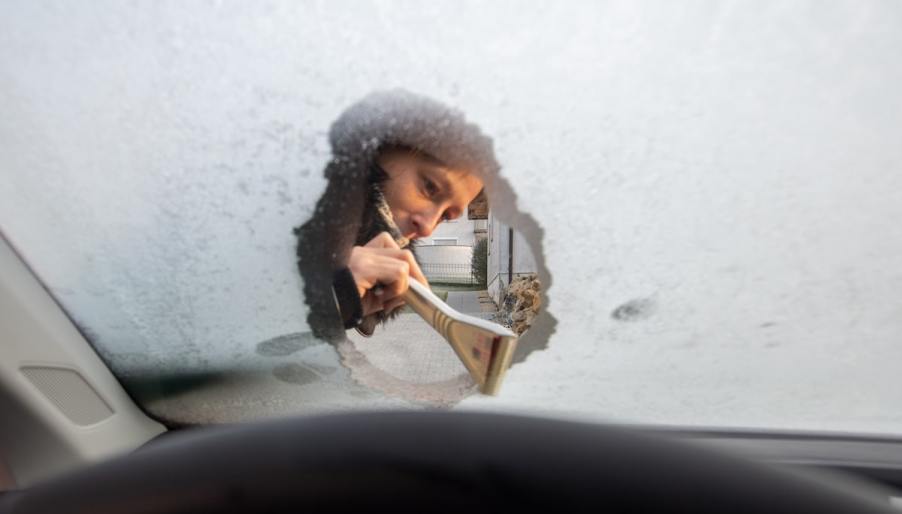
Can Windshield Wiper Washer Fluid Freeze in the Cold?
Freezing temperatures adversely affect many of our cars’ systems, from tire pressure to battery life, requiring regular maintenance. Like a water bottle left outside in frigid weather, automotive fluids, including windshield wiper washer fluid, can freeze. Knowing the freezing point of car fluids and what to do if they freeze is critical to car safety in cold temperatures.
Can windshield wiper fluid freeze?

Washer fluid designed for summer use will freeze at 32 degrees Fahrenheit (0 degrees Celsius). The frozen fluid can damage your car’s windshield washer reservoir and pump when temperatures drop below freezing. Worse still, the fluid could remain liquid while driving, only to freeze on the windshield, interfering with outward visibility.
Washer fluids formulated for winter use remain liquid at -20 degrees Fahrenheit (-28.9 degrees Celcius). If you drive in colder temperatures, consider a heavy-duty de-icing fluid with a freezing point of around -30 degrees Fahrenheit (-34.4 degrees Celcius). Use fluids with water-beading, anti-fog, and de-icing properties. However, avoid anything with saline because the salt could damage your windshield.
How to unfreeze your car’s wiper washer fluid lines
If your windshield washer system freezes, warm your car by running the engine. Do this outside and stay with your vehicle to prevent someone from stealing it. If your windshield is clear and the roads dry, you can drive your car while letting the system thaw. Do not use hot water or an open flame to thaw any part of your windshield washer system. It’s dangerous and could damage your car.
Once thawed, check the wiper fluid level and look for leaks. Though additives are available to lower the freezing point of your existing washer fluid, it’s best to avoid mixing fluids. Drain or use all the old fluid from the reservoir before refilling with a winter solution.
Where to safely store winter windshield wiper fluid

According to Poison Control, methanol accounts for 30% to 50% of the chemical components of winter windshield washer fluid. Consuming even small amounts of methanol can cause permanent blindness or result in death.
Most winter washer solutions come in transparent or opaque plastic jugs, showing the blue, yellow, or orange liquid inside. A child could mistake these colorful liquids for juice or soda. Likewise, pets are attracted to the smell, and drinking from a puddle or a drain pan can prove fatal.
The best windshield washer storage methods include the following:
- Keep the fluid in its original container; never transfer it to soda or juice bottles
- Ensure the cap is screwed on tightly
- Keep it in a locked cabinet, out of sight and reach of children
- If you carry extra fluid in the winter, lock it in the trunk or a lockable tote.
Other winter windshield and wiper care tips

Keep your windshield clean year-round to see glass chips and cracks early, especially in winter. Early detection and repair prevent moisture intrusion that could freeze and cause larger cracks.
Parking in a garage is the best way to prevent snow and ice buildup on your windshield. If that’s not an option, consider investing in a windshield cover or using carpet scraps to protect your windshield. In addition, wiper blade covers keep wipers free of snow and ice and prevent the blades from freezing to the glass.
If you drive in an area with freezing temperatures, you’ll want to be proactive and perform pre-winter vehicle maintenance. In addition to checking your tires, antifreeze, and emergency kit, remember to refill your windshield washer reservoir with winter fluid.






